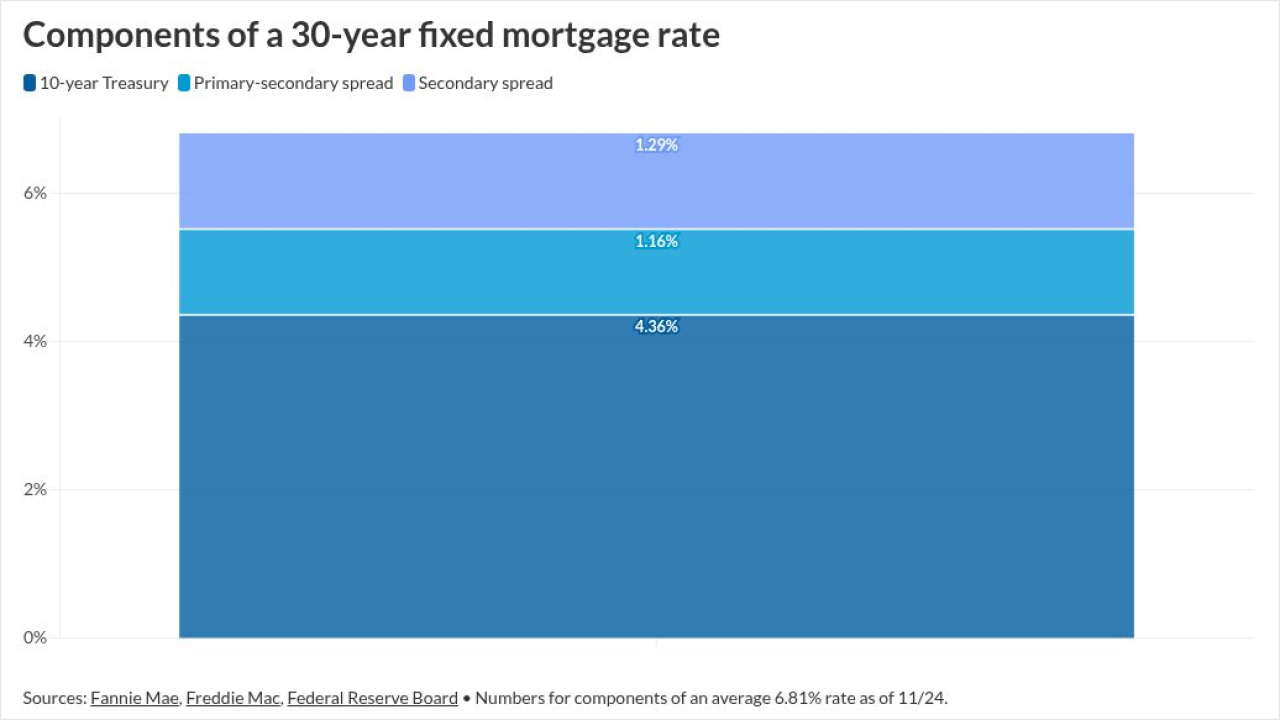Mortgage-related securities could experience performance issues as the White House moves to furlough and potentially cut some staff amid a congressional budget impasse, an analysis by Kroll Bond Rating Agency shows.
KBRA's assessment of Congressional Budget Office, Federal Reserve Bank of St. Louis, private-label securities and credit-risk transfer data finds concentrations exist most notably in older PLS deals.
The CRTs primarily used by government-sponsored enterprises Fannie Mae and Freddie Mac to share some of their loan performance risk with the private market tend to be larger and more diversified transactions than the PLS affected.
"The largest D.C. [metropolitan statistical area] exposure in any CRT transaction is less than 6%, while concentrations in PLS transactions can approach or exceed 20%," KBRA said in its report on
The ratings agency's analysts found more than 100 private-label residential mortgage-backed securities transactions had exposures to the Washington area greater than 5% of their current unpaid principal balance.
Tiers of potential borrower distress
Within the Washington metropolitan statistical area, an estimated 5.5% of residents are federal workers. Around 12% of the federal workforce is concentrated in the region, according to the St. Louis Fed, which marks the highest MSA concentration, according to KBRA.
"Depending on the length of furloughs, and, more importantly, the degree of
Some federal workers are "exempt" and get paid through the shutdown while those in the "excepted" category have been on track to get back pay when it ends. Altogether, the number of federal employees in the Washington area is around 350,000 or so.
"The most significant impacts are likely to be felt by those who experience permanent job losses. However, even for employees who ultimately return to previous positions, temporary income disruption may result in
Loans made outside the ability-to-repay rule's qualified mortgage definition also could be particularly exposed to impacts on private contractors dependent on business from federal worker clients.
"Service-sector employees may be particularly hard hit, potentially leading to higher delinquencies among loans in the non-QM segment, where a large portion of borrowers are self-employed," the analysts said in the report.
KBRA estimates contractors dependent on business from federal worker clients could magnify the number affected by 50%.
An extended shutdown with heavy layoffs that not only downsize incomes but lead to borrowers moving out of the Washington MSA could affect home prices in the region, according to the report.
"Given current home inventory shortages and the availability of alternative employment for some workers, this impact may be muted," the KBRA analysts said.
Other areas the government shutdown may impact
A Congressional Budget Office report indicates that as of Sept. 30, estimates for the total number of federal workers that could be furloughed in a shutdown was 750,000, pointing to impacts beyond Washington.
Regions outside of Washington, where there are higher percentages of federal workers and might even outweigh the capital's concentration, include metro areas with large military workforces
"Workers tied to military activities often face less disruption compared to their non-defense peers, given national security priorities," according to the report primarily authored by Sharif Mahdavian, Colleen Kelley, and Jack Kahan. (Yee Cent Wong also contributed to the study.)
Job priorities can shift over time in a shutdown, the CBO report notes, pointing to circumstances like a recent decision to recall some Bureau of Labor Statistics' workers to
The cessation of new


